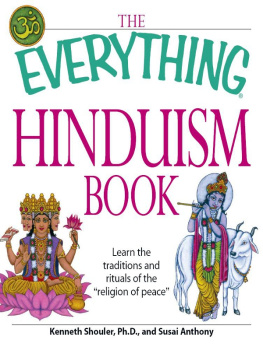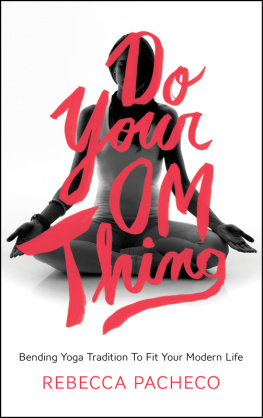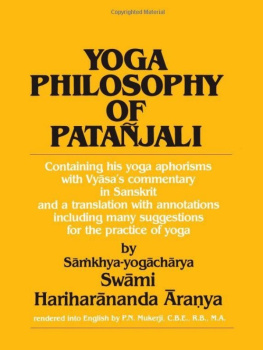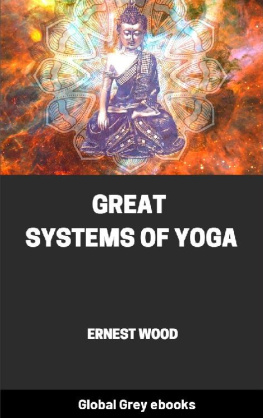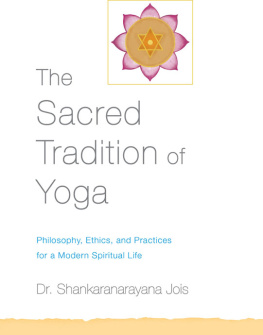
Yoga in Modern Hinduism
The Skhyayoga institution of Kpil Mah is a religious organization with a small tradition of followers that emerged in the last decade of the nineteenth century and the first decades of the twentieth century in Bengal in India around the renunciant and yogin Hariharnanda raya. This tradition developed during the same period in which modern yoga was born and forms a chapter in the expansion of yoga traditions in modern Hinduism.
The book analyzes the yoga teaching of Hariharnanda raya (18691947) and the Kpil Mah tradition, its origin, history and contemporary manifestations, and the traditions connection to the expansion of yoga and the Yogastra in modern Hinduism. The Skhyayoga of the Kpil Mah tradition is based on the Ptajalayogastra, on a number of texts in Sanskrit and Bengali written by their gurus, and on the lifestyle of the renunciant yogin living isolated in a cave. The book investigates Hariharnanda rayas connection to premodern yoga traditions and the impact of modern production and transmission of knowledge on his interpretations of yoga. The book connects the Kpil Mah tradition to the nineteenth-century transformations of Bengali religious culture of the educated upper class that led to the production of a new type of yogin. The book analyses Skhyayoga as a living tradition, its current teachings and practices, and looks at what Skhyayogins do and what Skhyayoga is as a yoga practice.
A valuable contribution to recent and ongoing debates, this book will be of interest to academics in the fields of religious studies, anthropology, Asian studies, Indology, Indian philosophy, Hindu studies, and Yoga studies.
Knut A. Jacobsen is professor in the study of religions at the University of Bergen, Norway. His research focuses on Yoga, Skhya, and Hindu conceptions and rituals of space and time. He is the editor in chief of the six volumes Brills Encyclopedia of Hinduism (20092015), and he is the editor of the Routledge Handbook of Contemporary India (2016).
Routledge South Asian Religion
1Hindu Selves in a Modern World
Guru Faith in the Mata Amritanandamayi Mission
Maya Warrier
2Parsis in India and the Diaspora
Edited by John R. Hinnells and Alan Williams
3South Asian Religions on Display
Religious Processions in South Asia and in the Diaspora
Edited by Knut A. Jacobsen
4Rethinking Religion in India
The Colonial Construction of Hinduism
Edited by Esther Bloch, Marianne Keppens and Rajaram Hegde
5Health and Religious Rituals in South Asia
Disease, Possession and Healing
Edited by Fabrizio M. Ferrari
6Time, History and the Religious Imaginary in South Asia
Edited by Anne Murphy
7Cross-disciplinary Perspectives on a Contested Buddhist Site
Bodhgaya Jataka
Edited by David Geary, Matthew R. Sayers and Abhishek Singh Amar
8Yoga in Modern Hinduism
Hariharnanda raya and Skhyayoga
Knut A. Jacobsen
Yoga in Modern Hinduism
Hariharnanda raya and Skhyayoga
Knut A. Jacobsen
First published 2018
by Routledge
2 Park Square, Milton Park, Abingdon, Oxon OX14 4RN
and by Routledge
711 Third Avenue, New York, NY 10017
Routledge is an imprint of the Taylor & Francis Group, an informa business
2018 Knut A. Jacobsen
The right of Knut A. Jacobsen to be identified as author of this work has been asserted by him in accordance with sections 77 and 78 of the Copyright, Designs and Patents Act 1988.
All rights reserved. No part of this book may be reprinted or reproduced or utilized in any form or by any electronic, mechanical, or other means, now known or hereafter invented, including photocopying and recording, or in any information storage or retrieval system, without permission in writing from the publishers.
Trademark notice: Product or corporate names may be trademarks or registered trademarks, and are used only for identification and explanation without intent to infringe.
British Library Cataloguing-in-Publication Data
A catalogue record for this book is available from the British Library
Library of Congress Cataloging-in-Publication Data
A catalog record for this book has been requested
ISBN: 978-1-138-08059-1 (hbk)
ISBN: 978-1-315-11334-0 (ebk)
Typeset in Times
by Apex CoVantage, LLC
This book has been a long-term project. I want to recognize the support I have received from a number of persons of the Kpil Mah institutions for the project over the years. The head of Kpil Mah, Bhskara raya, early on gave his support to the project, and I am thankful for his cooperation. I have always felt welcomed at the Mah. I want to express my thanks to the late Ram Shankar Bhattacharya, who was a disciple of the Kpil Mah. I am also thankful for the assistance I have received from Adinath Chatterjee, Santanu Mukhopadhyay, Abhijit Mukhopadhyay, Asoke Chattopadhyay, Tarapada Roy Chowdhury, Deepti Dutta, Swati Ray, D. N. Banerjee, and all the other devotees of the Kpil Mah in Madhupur. I would also like to thank the late Omprak raya, Abhai Singh, Sohmer Gautam, and the other devotees of Kpil Skhyayogram in Sarnath, as well as Banabir Bhattacharya and devotees of the Kpil ram in Kurseong, for their cooperation and assistance. I want to acknowledge the assistance of Sagar Chowdhury in Puducherry, Ajay Pandey, and Krishna Mohan Mishra in Varanasi, and thank Gerald James Larson, professor emeritus at the University of California for his continuous support and encouragement, and, finally, I want to state my gratefulness to my partner Hanne Svendsen for her assistance during many of the visits over the years to Madhupur, Kurseong, Kolkata, Varanasi, Sarnath, and Ganga Sagar.
The religious institution explored in this book is a small tradition of followers of Skhyayoga, which emerged in the last decade of the nineteenth century and the first decades of the twentieth century in Bengal in India around the renunciant and yogin Hariharnanda raya. Hariharnanda raya was from Howrah in Bengal, on the west bank of the river Hooghly from Kolkata, and lived from 1869 to 1947. For most of those years, 1892 to 1947, he lived the life of a Skhyayoga sanysin (renunciant, ascetic) and authored many texts in Sanskrit and Bengali on the theory and practice of yoga. raya is an enigmatic figure of the early history of modern yoga. He promoted the ancient Skhyayoga teaching as a living religious tradition and attracted a small number of disciples who themselves also became Skhyayogins, a few monks, and a small number of laypeople. He spent many years in caves and in ramas, which were named after the ancient sage Kapila: Kpilrama (the hermitage following the teaching of Kapila) and Kpila Maha/Kpil Mah (the monastery following the teaching of Kapila). His most important work is considered to be the Kpilramya Ptajal Jogdaran (The Yoga Philosophy of Patajali of the Kpilram), a Bengali translation of the Sanskrit text Ptajalayogastra (Yogastra and its auto-commentary Yogabhya



